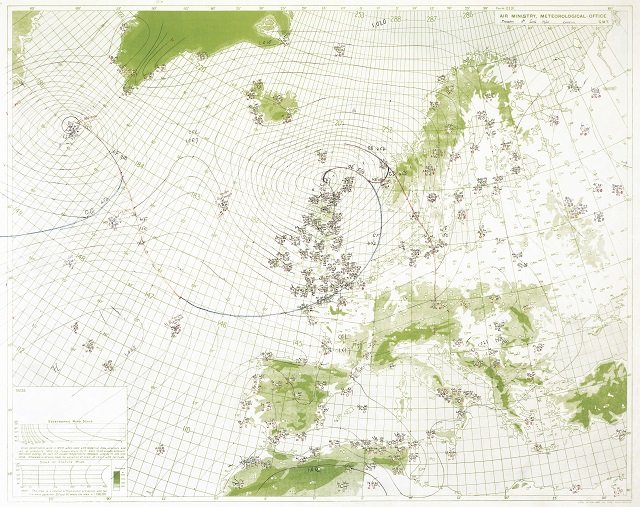World Wars
Some of the materials held in the National Meteorological Archive that illustrate the work of the Met Office in the two World Wars

D-Day Chart - 0100 UTC on 5 June 1944
Weather has often played a key part in the success or failure of military campaigns. The Met Office has provided meteorological support to the armed forces of the United Kingdom and her allies since 1915. During the course of the First World War the significance of meteorology in operational planning was grasped and fully understood and at the end of the war the Met Office moved from the Board of Trade to the Air Ministry (later the Ministry of Defence) thus illustrating this key relationship. By the Second World War meteorological support was fully integrated into military operations and forecasts provided in support of Operation Overlord remain perhaps the most important forecasts ever produced by the Met Office. These pages feature some of the materials held in the National Meteorological Archive that illustrate the work of the Met Office in the two World Wars.
World War One
- The Met Office in WW1 - Ernest Gold and the First Operational Military Forecast 24 October 1916
- First day of the Battle of the Somme - 1 July 1916 - synoptic charts and observational data for the first day of the Battle of the Somme - 1 July 1916
- The Met Office at the end of the First World War - an account of the Met Office at the end of the first World War and how life for its staff continued largely unchanged (NEW)
World War Two
- D-Day and Operation Overlord - a selection of synoptic charts and archive records related to the historic D-Day landings
- Rembrandt, Radios and the Resistance - how the Dutch Resistance helped support the Met Office in World War 2





